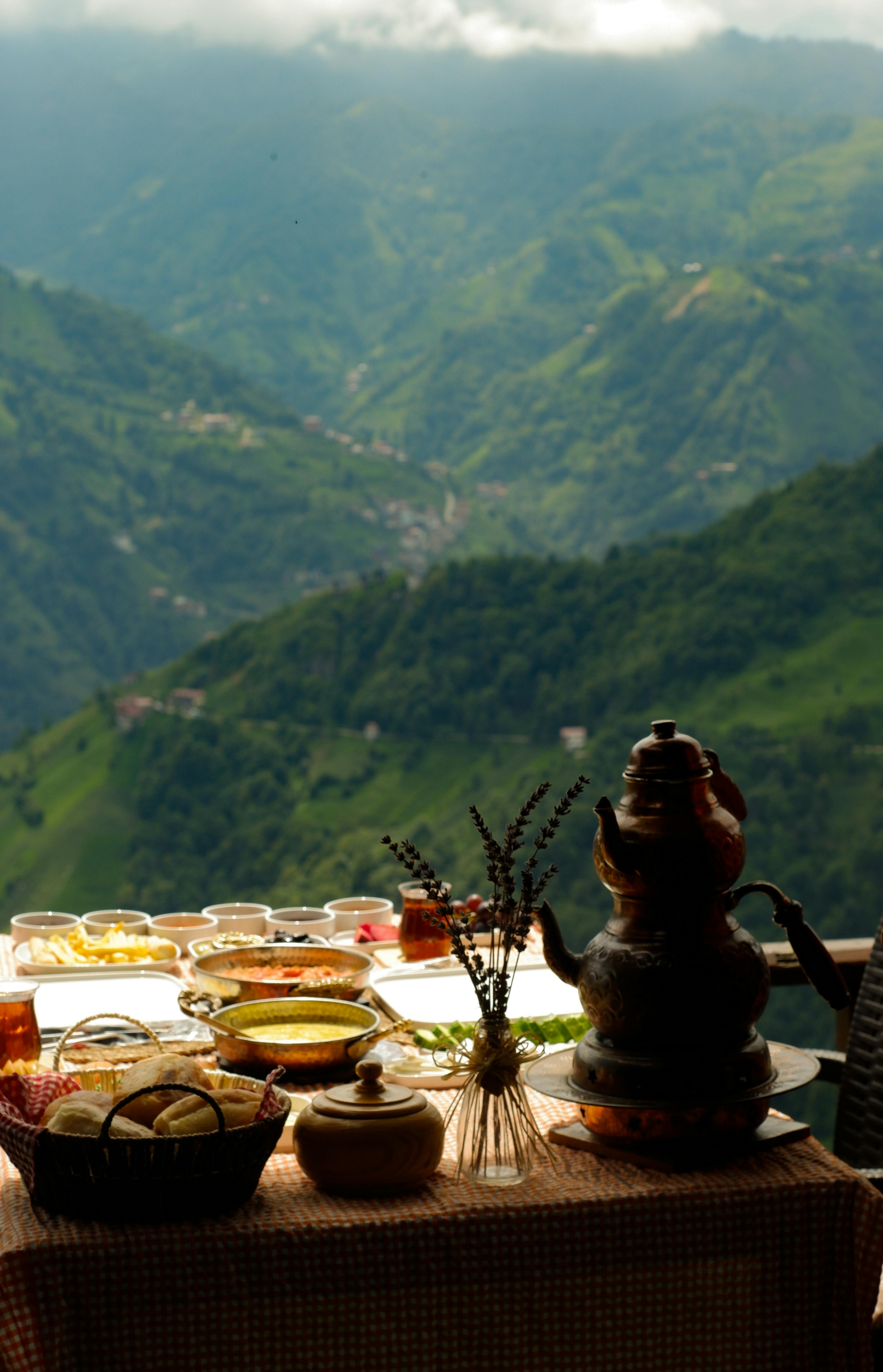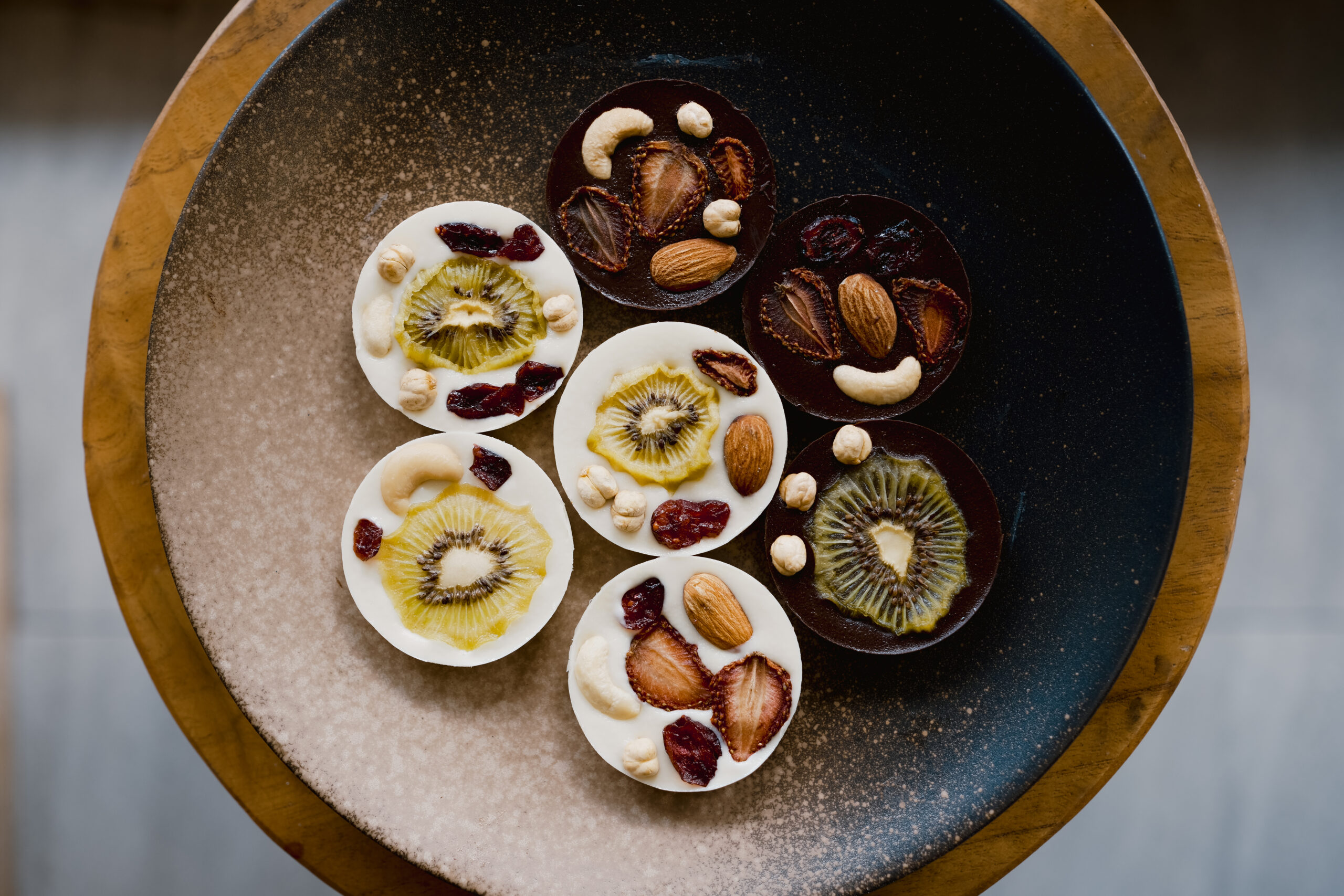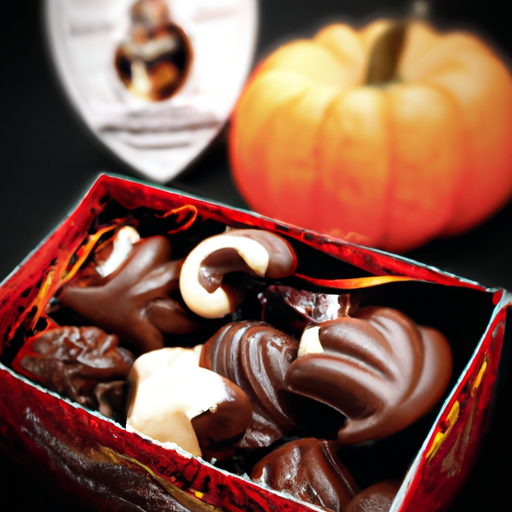Indulge in the fascinating journey of chocolate, from its humble beginnings as Aztec elixirs to becoming one of the world’s most beloved sweet treats. Tastepan.com invites you to dive into the rich history of chocolate, uncovering the cultural significance, regional variations, and captivating stories behind this decadent delight. Prepare to be captivated by the sweet aromas and tantalizing flavors that have shaped our global food culture. Join us as we explore the rich heritage of chocolate, tracing its origins and evolution through time, and savoring the delicious moments in between. Get ready to satisfy your cravings for knowledge and indulge in the irresistible allure of chocolate.

Ancient Origins of Chocolate
The discovery of cacao beans
Imagine yourself transported back in time to the lush rainforests of Central America thousands of years ago. It is in this vibrant landscape that the story of chocolate begins. The ancient civilizations of Mesoamerica, such as the Mayans and Aztecs, were the first to discover the cacao tree and unlock the secrets of its precious beans.
Legend has it that the cacao tree was a divine gift from the gods, and the ancient Mesoamericans quickly recognized the value of this extraordinary plant. They believed that cacao beans possessed powerful and mysterious properties, making them highly sought after.
The use of cacao in ancient Mesoamerican cultures
In ancient Mesoamerican cultures, cacao had an important role that extended far beyond their culinary traditions. Cacao beans were used as a form of currency, with one bean often being equivalent to the value of a small rabbit. They were even offered as tribute to rulers and used as a dowry during important ceremonies.
Beyond its economic significance, cacao also played a pivotal role in rituals and spiritual practices. The ancient Mesoamericans believed that cacao had the power to connect them to the supernatural realm. It was often consumed in ceremonial drinks and believed to provide divine wisdom and guidance.
Aztec and Mayan Chocolate Culture
The importance of chocolate in Aztec and Mayan societies
Both Mayan and Aztec civilizations placed immense value on chocolate, and it was considered a luxury reserved for the elite. Chocolate was consumed by nobles and royals, and it formed an integral part of their social customs and religious ceremonies.
The ceremonial use of chocolate
In ancient Mesoamerican cultures, chocolate was more than a delicious treat – it held deep cultural and spiritual significance. It was often consumed in elaborate rituals and ceremonies to honor gods, celebrate important life events, and even as offerings to appease the deities.
Xocoatl: The Aztec bitter chocolate drink
Xocoatl, a bitter and spicy chocolate drink, was a staple in Aztec society. It was made by grinding roasted cacao beans with various spices and peppers. Xocoatl was highly revered, and it is said that Aztec warriors drank it before going into battle to gain strength and courage.

European Encounters with Chocolate
Christopher Columbus and the introduction of cacao to Europe
The encounter between Christopher Columbus and the indigenous peoples of the Americas would forever change the course of history. During his voyages, Columbus was introduced to the cacao bean and brought this newfound treasure back to Europe. However, it would take some time for Europeans to fully embrace the wonders of chocolate.
The transformation of chocolate in Europe
Once cacao arrived in Europe, it underwent a fascinating transformation. Initially, chocolate was consumed primarily as a beverage, often mixed with sugar and spices to balance its natural bitterness. However, as time went on, Europeans began to experiment with different recipes and techniques, eventually leading to the creation of solid chocolate.
The popularity of chocolate among European nobility
As chocolate spread throughout Europe, it captured the hearts and palates of the nobility. It became synonymous with luxury and elegance, and its consumption was considered a mark of sophistication. It was consumed at lavish banquets and social gatherings, and special chocolate houses began to emerge, where the elite could indulge in this decadent treat.
The Industrial Revolution and Chocolate
The invention of the cocoa press
The 19th century brought about a revolution in chocolate production with the invention of the cocoa press. This innovative machine allowed for the extraction of cocoa butter, which in turn made it possible to produce cocoa powder. The cocoa press revolutionized the chocolate industry, making it more efficient and affordable.
The emergence of solid chocolate
With the cocoa press came the ability to produce solid chocolate. By combining cocoa powder, sugar, and cocoa butter, chocolatiers were able to create chocolate bars. This marked a major shift in the way chocolate was consumed, as it was no longer limited to liquid form.
The creation of chocolate bars
As the industrial revolution progressed, chocolate bars became more widespread and accessible. These portable and convenient treats quickly gained popularity among people from all walks of life. Chocolate bars became a symbol of indulgence and pleasure, and their mass production made them affordable to the general public.

The Chocolate Revolution in Switzerland
The innovative techniques of Swiss chocolatiers
Switzerland has played a pivotal role in shaping the world of chocolate as we know it today. Swiss chocolatiers were pioneers in developing innovative techniques, such as conching, which revolutionized the texture and quality of chocolate. Conching involves grinding chocolate for an extended period, resulting in a smoother and creamier product.
The birth of milk chocolate
One of Switzerland’s greatest contributions to the world of chocolate was the creation of milk chocolate. In 1875, Swiss chocolatier Daniel Peter combined condensed milk with chocolate, creating a smooth and creamy delight that would forever change the chocolate industry.
Switzerland’s contribution to the world of chocolate
Switzerland’s commitment to excellence in chocolate-making, coupled with its picturesque landscapes, has made it synonymous with high-quality chocolate. Swiss chocolate brands like Lindt, Toblerone, and Nestle have become world-renowned, and the country has become a must-visit destination for chocolate enthusiasts.
The Rise of Chocolate Brands
The development of famous chocolate brands
Over the years, numerous chocolate brands have emerged, captivating consumers with their unique flavors and identities. Brands like Hershey’s, Cadbury, and Godiva have become household names, synonymous with indulgence and decadence. These brands continue to innovate and delight chocolate lovers worldwide.
The impact of advertising on chocolate consumption
Advertising has played a significant role in shaping chocolate consumption patterns. Clever marketing campaigns have promoted chocolate as a treat for special occasions, a gift for loved ones, or even a pick-me-up during challenging times. From catchy jingles to captivating visuals, advertising has helped to solidify chocolate’s place in popular culture.
The globalization of chocolate brands
In today’s interconnected world, chocolate knows no borders. Chocolate brands have expanded their reach to all corners of the globe, with products being enjoyed and recognized worldwide. This globalization has led to cultural exchanges, as flavors and traditions merge to create new and exciting chocolate experiences.
Chocolate in Popular Culture
The portrayal of chocolate in literature and film
Chocolate has long been romanticized and celebrated in popular culture. Countless books and films have featured chocolate as a symbol of indulgence, pleasure, and even sensuality. From Roald Dahl’s “Charlie and the Chocolate Factory” to the iconic film “Chocolat,” chocolate has captivated the imagination and taste buds of people around the world.
Chocolate as a symbol of indulgence and pleasure
Throughout history, chocolate has been associated with pleasure and indulgence. Whether enjoyed as a decadent dessert, a comforting treat, or a symbol of love, chocolate continues to evoke joy and satisfaction. Indulging in a piece of chocolate is often seen as a moment of self-care and a way to treat oneself.
The Health Benefits of Chocolate
The discovery of the health properties of chocolate
In recent years, scientific research has uncovered the potential health benefits of chocolate. Dark chocolate, in particular, has been found to contain antioxidants and flavonoids, which can contribute to cardiovascular health and may even have mood-enhancing effects.
The rise of dark chocolate as a health food
Dark chocolate with a high percentage of cocoa solids has gained popularity as a health food. With its lower sugar content and higher concentration of beneficial compounds, dark chocolate is seen as a guilt-free indulgence that can provide both pleasure and potential health benefits.
The scientific studies on chocolate’s effects on the body
Numerous scientific studies have explored the effects of chocolate on the body. Research has suggested that moderate consumption of dark chocolate may contribute to improved heart health, reduced inflammation, and even enhanced cognitive function. However, it is important to note that these findings are not a green light to consume excessive amounts of chocolate, as moderation is key.
Fair Trade and Sustainable Chocolate
The issues of child labor in the chocolate industry
As the demand for chocolate increased, so did concerns about the ethical practices within the industry. Child labor and exploitative working conditions were brought to light, highlighting the need for change. Consumers began to advocate for fair trade practices, ensuring that cocoa farmers and workers receive fair wages and are not subjected to harmful labor practices.
The rise of fair trade chocolate
In response to these concerns, fair trade chocolate emerged as a movement to promote ethical sourcing and trading practices. Fair trade certification ensures that farmers are paid fair prices for their cocoa and that harmful labor practices are eliminated. By supporting fair trade chocolate, consumers can enjoy their favorite treats while contributing to a more sustainable and just industry.
Sustainable practices in cacao farming
To safeguard the future of chocolate, sustainable practices in cacao farming have become crucial. This includes promoting agroforestry, biodiversity conservation, and eco-friendly farming practices. By adopting sustainable methods, farmers can protect the environment, ensure the longevity of their crops, and maintain the quality of the chocolate we all love.
The Future of Chocolate
Innovations in chocolate production
The world of chocolate continues to evolve, with constant innovations pushing the boundaries of what is possible. From new flavor combinations to unique textures, chocolatiers are constantly experimenting and creating exciting new products. Technological advancements also play a role, with techniques like 3D printing being used to create intricately designed chocolates.
The exploration of new flavors and combinations
As palates become more adventurous, the exploration of new flavors and combinations in chocolate is gaining momentum. From exotic fruits and spices to unexpected savory ingredients, the possibilities are endless. Chocolatiers are constantly pushing their creative boundaries to surprise and delight chocolate connoisseurs with unique and daring flavors.
Cultural shifts in chocolate consumption
As the world becomes increasingly interconnected, cultural shifts in chocolate consumption are inevitable. Traditional flavors and techniques blend with new influences from around the globe, resulting in a diverse chocolate landscape. Additionally, changing dietary preferences, such as the rise of veganism, have led to an increased demand for plant-based and alternative chocolates.
As we reflect on the rich history and exciting future of chocolate, we can appreciate its status as a beloved and enduring treat. From ancient civilizations to modern-day indulgence, chocolate has captured our hearts, tantalized our taste buds, and become an integral part of our cultural tapestry. So, the next time you unwrap a chocolate bar or savor a luxurious truffle, remember the incredible journey that has shaped this delectable delight. Enjoy it with all of your senses, knowing that you are participating in a global tradition that spans centuries.

